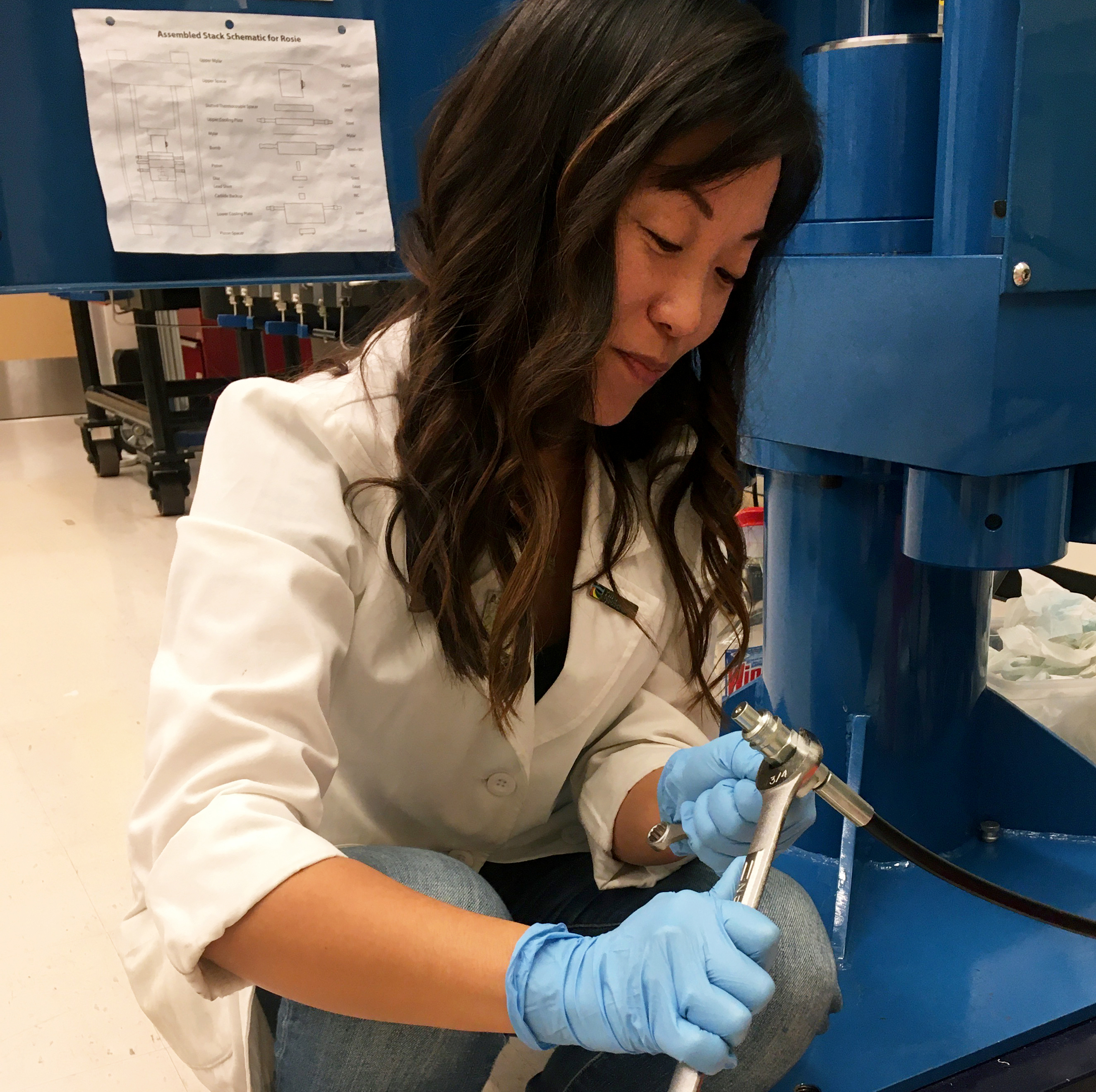
I am interested in magma genesis and volatile solubility on exoplanets, Earth, and solar system bodies, the timescales of events in magmatic systems, geothermometry, volcano science and hazards, high-silica magmatic systems, and how our planet's volcanologic and petrologic mechanisms can be used to understand those on other planets and moons.
I use experimental petrology to study exoplanet magmas and use diffusion chronometry to examine timescales of effusive eruptions at Yellowstone.
2015–current
Partial melting and solubility experiments to determine crust compositions; anhydrous solidi; and volatile and bioessential element solubilities of rocky planets orbiting other stars.
Brugman, K., Dunning, S.G., Cody, G.D., Wang, J., Bullock, E., Steele, A., Badro, J., Shahar, A. (in revision) Hydrogen solubility and speciation in primitive silicate melt. To JGR: Planets.
Brugman, K., Phillips, M.G., Till, C.B. (2021) Experimental Determination of Mantle Solidi and Melt Compositions for Two Likely Rocky Exoplanet Compositions. JGR: Planets, 10.1029/2020JE006731.
2014–2022
Development of a new diffusion chronometry method to compare pre-eruptive timescales from Fe-rich clinopyroxene to timescales from other minerals. This project examines the last events recorded by minerals in the Scaup Lake flow, a Yellowstone post-caldera rhyolite.
Brugman, K., Till, C.B. Bose, M. (2022) Common Assumptions and Methods Yield Overestimated Diffusive Timescales, as Exemplified in a Yellowstone Post-Caldera Lava. Contributions to Mineralogy and Petrology, 10.1007/s00410-022-01926-5.
2017–2019
Development of a new clinopyroxene-liquid geothermometer specifically calibrated for the low-Al, high-Fe clinopyroxene found in high-silica igneous systems.
Brugman, K.K., and Till, C.B. (2019) A low-aluminum clinopyroxene-liquid geothermometer for high-silica magmatic systems. American Mineralogist, 10.2138/am-2019-6842.
January 2026
2023–2025
2020–2022
April 2020
Dissertation: Timescales and Characteristics of Magma Generation in Earth and Exoplanets
May 2014
Honors thesis: Understanding the History of Arabia Terra, Mars Through Crater-Based Tests
* invited # talk
FORCE's DIA multi-anvil, Jasmine, has been commissioned
| Watch the installation video |
I created a couple videos that document the construction of Ichiban
| Watch the full assembly video | Watch the timelapse only |
FORCE's 6000 ton uniaxial multi-anvil, Ichiban, is complete!
| Read the construction update |
I had a brush with fame when my (blurry) photograph was featured in a Washington Post article about high pressure research at ASU
| Read the WaPo article |
I joined Dr. Michael Wong and other Carnegie Earth & Planets Lab postdocs for a Neighborhood Lecture about "The Science of Star Trek"
| Watch the full video |
I was featured on the Carnegie Earth & Planets Lab website
| Read the Postdoc Spotlight |
During quarantine/CoronaTimes/The Wrong Timeline I've been continuing my experimental work at EPIC (ASU), including some drop-quench experiments conducted in our vertical furnace
| Watch slow-motion videos |
I recorded a lab tour video for ASU SESE's new students,
since they can't visit labs in person during the pandemic
| Visit the EPIC lab |
I talked about my exoplanet experiments and 'Star Trek: Picard' on the
'Strange New Worlds' science and Trek podcast
| Listen to Episode 89: Strange New Melts |
Graduate study at UNM
I highly recommend you read the graduate degree info on the Earth & Planetary Sciences (EPS) department website for admissions requirements, program details, scholarship opportunities, and graduate classes. You should also peruse the UNM Graduate College website. Many of your questions about the program and application can be answered here.
Please register to attend the EPS prospective student information webinar and Q&A. This zoom will be held on Nov. 20 at 4 pm Mountain. If at all possible, you should attend this webinar. This information will help you decide whether the program seems like a good fit for you.
Other useful links:
Questions about me, my lab, research, and funding
I will hold three 45 minute info zooms in late November and early December. Each zoom will be restricted to 20 participants; if you cannot register, please pick another date. If you are not able to attend any of these dates, please let me know and I will try to schedule another date; however I cannot guarantee I will be able to accommodate all special requests.
If you still have burning questions that we didn't get to in the main info session, I will have a few 1:1 meeting slots available Dec. 8–9 for 20 minutes each. You should attend one of the main info sessions first; this where the sign-up link will be given. I do not have enough time to meet with everyone who has contacted me, unfortunately, so please do try to get your questions answered in the main info zoom and think about whether a 1:1 is necessary. That being said, if all of the slots are full, please let me know and I'll see if I am able to fit in another block of times.
In general, for research projects, preference will be given to students who have completed Igneous and Metamorphic Petrology and Mineralogy due to the type of science done in this research group. If you are interested, please reach out at the email address below.
FORCE: Facility for Open Research in a Compressed Environment
Arizona State University, Tempe, AZ
brugman [at] unm [dot] edu